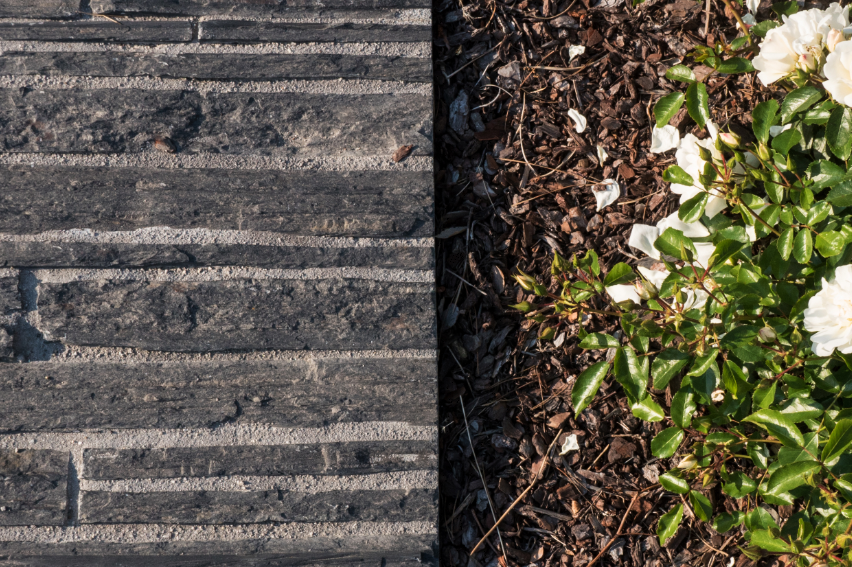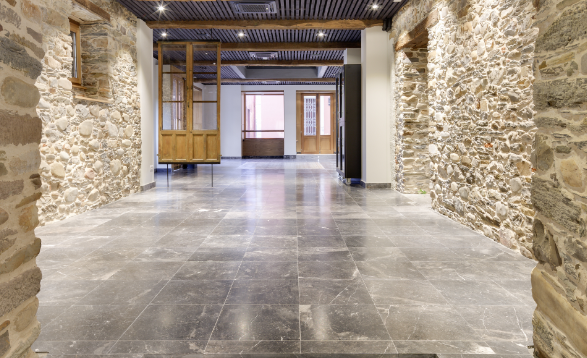
Natural stone floor coverings have significantly lower environmental and economic impact than other covering materials such as ceramics, carpets, PVC, laminates and parquet. This is the major conclusion of a team of researchers from the Institute for Materials in Construction at the University of Stuttgart, after carrying out a new comprehensive study about sustainability of floor coverings from the production to the use phase.
Today, the topic of reducing energy demand and CO2 emissions is becoming increasingly important. Construction products should have the lowest possible environmental impact in their manufacture and use. The German Natural Stone Association commissioned a study that found greenhouse gases produced and used in natural stone flooring have significantly lower CO2 equivalents than other covering materials. The report spans 50 years of use for public surfaces with high traffic. These are the most important key points of the study:
1. NATURAL STONE HAS A VERY GOOD LIFE-CYCLE

Natural stone floor coverings achieve very good life-cycle assessment results, due to the low primary energy demand of the stone. According to the Federal Construction Materials Association (Non-metals) of Germany, the costs of energy consumption for processing natural stone are a more 3,3% of the production value. A comparison of all floor coverings showed that house produced from natural stone cause a lower environmental impact in their production, installation and use than large-format ceramics, carpets, PVC, laminates and parquet. For example, according to the study, the ecological life-cycle of a natural stone tile is approx. 84% lower than that of a large ceramic tiles.
2. NATURAL STONE DISPLAYS LOWER CO2 EMISSIONS

In the category of global warming potential (GWP) impact, the production and utilisation of floor coverings using natural stone tiles display lower CO2 emissions. For example, the GWP of a natural stone slab is about 27% lower than of a terrazzo tile and about 74% less than that of large-format ceramics.
3. LOCAL NATURAL STONE REDUCES GREENHOUSE GASES

Another important aspect of using natural stone is the influence of transportation. The study compared natural stone from local quarries to those from other EU-countries and from the far East. The CO2 equivalent tells us how much greenhouse gas is produced and released in manufacturing and using a building material. While only 0,16 kg CO2 equivalent are produce when using local natural stone, this increases to 3,2 kg CO2 equivalent in the case of transport within Europe and 7,9 kg CO2 equivalent per square metre of flooring for natural stone from China.
This study shows a positive conclusion for natural stone. The direct comparison with other materials proves that natural stone floor coverings have a much better life-cycle in production, less CO2 emissions in utilisation and less environmental impact due to transportation. Data basis for the comparison are certified environmental product declarations (EPDs), from which the environmental indicator values were taken.
For further information, check the study on the German Natural Stone Association website.





